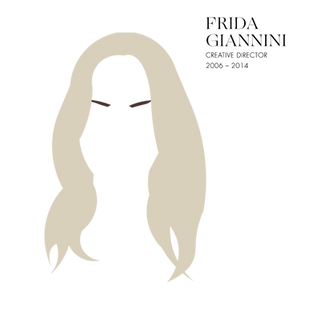100 YEARS OF GUCCI
- Samruddhi Karandikar

- Apr 26, 2021
- 4 min read
If it wasn't enough that this year marked a century of Chanel's iconic Nº5 fragrance – 2021 is also the year Gucci celebrates its centenary. Side note: I do suggest listening to this playlist whilst you read, it really sets the scene. With the Italian fashion house presenting its Autumn-Winter 2021 collection and calling it their aria – “an aria is the moment when the best singers start to sing at the heart of the opera,” Michele explained to The Business of Fashion's Tim Blanks – it felt like the perfect time to dive into Gucci's rich heritage.
The brand was founded in 1921 by Guccio Gucci in Florence – like most luxury brands at the time (think Louis Vuitton and Burberry for instance), they primarily offered high-end luggage and small leather goods. Gucci's equestrian influences were an amalgamation from the time Guccio spent as a porter at the Savoy in London, and later as he made leather goods like saddles and riding boots for horseback riders in Florence. You can see these influences as a theme running across most of their accessories, including in the ever so popular Horsebit Loafers. Over the last century, the Italian brand has given us more than just equestrian-influenced fashion but has been inspired by historical events and figures which developed into products like the Bamboo tote, their signature Flora print and the house's iconic Jackie bag – all of which are now synonymous with Gucci.
What started initially as a family business with sons and brothers fighting for control of the company, over time has seen such a shift in its creative direction – the first wave of which began in 1989 with Dawn Mello. Mello was originally hired as a vice president and chief designer to streamline the brand's design process. Not only did she shift the brand's headquarters from Milan back to Florence – she closed over 800 of the stores to increase Gucci's exclusivity, reformed the range of products the brand sold and brought Florentine craftsmen and artisans into the fold to further steep the brand in its Italian heritage. Mello spent her time as a chief designer by reviving the classic Bamboo handle bag, along with the horsebit loafers and in 1994 hired Tom Ford to oversee the womenswear division.
In a nutshell – Ford made Gucci classic, yet sexy, and maybe a little provocative or controversial for some. His 1995 collection was a seventies-inspired season that gave the brand a fresh, new direction, tinged with jewel-toned shirts, suits and separates, velvet and leather, although the equestrian undertone was still visible in the everpresent horsebit loafers. He brought in french fashion editor Carine Roitfeld and photographer Mario Testino to work with him on ad campaigns for Gucci including the pubic hair ad of 2003 (which caused its own stir of epic proportions at the time), after which he continued to push the boundaries of censorship and created a fantasy and vision for his audiences that was about more than just the clothes. Even though Gucci and Ford's collaboration ended on a not-so-pleasant note, he managed to raise the brand's value from $4 billion to $10 billion during his tenure as creative director.
After Ford's departure, the company scrambled to find in-house designers to keep production going, and they found their trio soon enough. From 2004, former creative consultant John Ray was appointed as creative director for menswear, Alessandra Facchinetti for womenswear and former handbag designer Frida Giannini as head of accessories. By 2006, both Ray and Facchinetti had left the brand, and Giannini as the last one standing was elevated to creative director for all collections across the board. While her tenure was just as long as her predecessor, within 9 years she had revived the Flora print from the Grace Kelly era by applying the print to handbags, footwear and later apparel and managed to tone down Tom Ford's "porno chic" aesthetic to a more wearable, androgynus one with influences from the 19th century. Tension grew between Giannini and her team in 2009 when she and former Gucci CEO Patrizio di Marco began a romantic relationship, and the staff felt they didn't have anyone left to turn to in trying times. Following the couple's abrupt departure in December 2014, Giannini's deputy, handbag designer Alessandro Michele was left to pick up the pieces – and pick them up he did! After he was appointed as creative director in January, he pulled together a collection fit for the menswear presentation within a week, and since then has taken the Italian luxury brand to a completely different scale.
Under Michele's guidance, Gucci has managed to introduce a more sophisticated, exclusive and almost genderless sensibility for their designs, launched initiatives like Gucci Equilibrium (a programme that works to make Gucci more environmentally and sustainably responsible), and opened the Gucci Museum in Florence which gives the public a chance to immerse themselves in the brand's rich heritage and various eras. The Italian designer is also responsible for bringing back the double 'GG' logo, resuscitating the Jackie bag and creating the now iconic Dionysus handbag to say the least. With house ambassadors like Jared Leto, ASAP Rocky, Jane Fonda, Dakota Johnson and most recently Harry Styles – Gucci is on every red carpet, magazine cover, and over the last 6 years has become one of Kering's biggest revenue generators.
Last week, for their Autumn-Winter 2021 100th anniversary show, Michele took a trip down memory lane and paid tribute to each of the defining moments responsible for bringing Gucci where it its on the luxury ladder today. The red velvet tuxedo which started the show was reminiscent of Tom Ford's Gucci and the suit Gwyneth Paltrow wore to the 1996 MTV Awards, riding helmets were representative of Guccio Gucci's time at the Savoy, and riding boots reminders of the brand's equestrian heritage. Watch the show below.












Comments